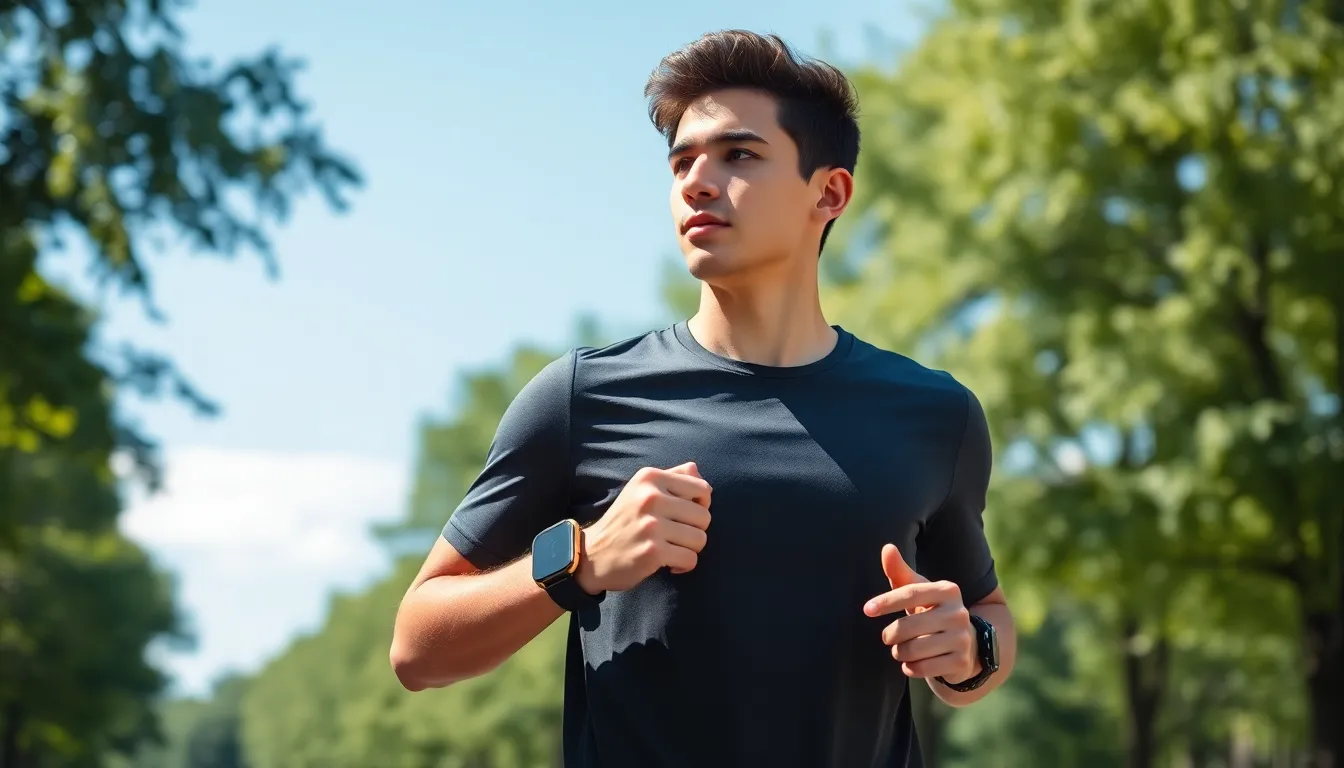In a world where counting steps has become as essential as counting calories, IoT fitness trackers have stepped into the spotlight. These nifty gadgets don’t just track your every move; they give you a virtual high-five for every mile conquered and every calorie torched. Who knew that monitoring your fitness could feel like having a personal cheerleader strapped to your wrist?
Table of Contents
ToggleOverview Of IoT Fitness Trackers
IoT fitness trackers have gained immense popularity among health-conscious individuals. These devices integrate technology with fitness goals, allowing users to monitor their progress seamlessly.
What Are IoT Fitness Trackers?
IoT fitness trackers are wearable devices designed to collect and analyze health data. They typically measure metrics like heart rate, sleep patterns, and physical activity levels. These trackers connect to the internet, enabling real-time data sharing and syncing, which enhances the user’s fitness experience. Many IoT fitness trackers offer mobile app compatibility, allowing users to access their information via smartphones or tablets.
Key Features Of IoT Fitness Trackers
IoT fitness trackers boast several key features that enhance their functionality. Multi-sensor integration captures various health metrics like steps, calories, and sleep quality. Real-time notifications keep users informed about calls and messages, adding convenience to their fitness journey. The user-friendly interfaces on many trackers simplify navigation and data interpretation. Customizable goals allow users to tailor their fitness plans to individual needs and preferences.
Benefits Of Using IoT Fitness Trackers

IoT fitness trackers offer numerous advantages that enhance overall health and fitness experiences. These devices play a vital role in health monitoring and provide motivation for users.
Health Monitoring
Health monitoring stands at the forefront of IoT fitness trackers’ benefits. These devices measure metrics like heart rate, sleep quality, and activity levels, enabling individuals to track their well-being accurately. They collect real-time data, allowing users to detect patterns over time. Users can receive alerts for irregular heart rates or sleeping disturbances, prompting healthier lifestyle changes. With integrated sensors, these wearables assess body activities throughout the day, resulting in a comprehensive health overview. This level of insight helps individuals make informed decisions about exercise and rest.
Motivational Aspects
Motivational aspects of IoT fitness trackers significantly enhance user engagement. These devices provide personalized feedback, creating a sense of accountability. Users often set specific, measurable goals, while the trackers assess progress toward those objectives. They offer rewards for achieving fitness milestones, such as badges or virtual trophies, fostering a competitive spirit. Real-time notifications encourage continuous movement and activity, preventing sedentary behavior. Connecting with social platforms allows individuals to join fitness communities, enhancing motivation through shared accomplishments. Such features make users feel as if they have their personal cheerleaders, propelling them toward their fitness aspirations.
Popular IoT Fitness Tracker Brands
Numerous brands dominate the IoT fitness tracker market, each offering unique features and capabilities. These brands consistently push the envelope in health technology.
Brand Comparison
Garmin excels in multisport capabilities, attracting athletes and outdoor enthusiasts with specialized features. Fitbit prioritizes user experience, offering a variety of stylish designs and community-driven features. Apple Watch integrates health monitoring seamlessly with smartphone functionalities, appealing to users who prefer versatility. Xiaomi delivers budget-friendly options without sacrificing essential metrics, making fitness tracking accessible. Samsung focuses on smartwatch capabilities, providing fitness features alongside a range of apps and connectivity options. Each brand serves different needs, tailoring their devices to specific consumer preferences.
User Reviews And Experiences
Users frequently praise Garmin fitness trackers for accuracy in GPS tracking, particularly for running and cycling. Many Fitbit users enjoy the engaging interface and social features that drive motivation. Apple Watch owners appreciate the convenience of integrating fitness data with other applications, enhancing their daily routines. Xiaomi customers often highlight value for money, noting their satisfaction with the essential functionalities. Samsung users commend the seamless connection with other devices, enhancing overall usability. These reviews indicate a strong preference for brands that blend technology with user-friendly designs, ensuring a positive fitness experience.
Future Trends In IoT Fitness Trackers
IoT fitness trackers continuously evolve, offering new features and capabilities. The integration of various technologies enhances user experience and data accuracy.
Integration With Other Technologies
Integration with health applications and smart home devices allows seamless data sharing. Users can connect fitness trackers to apps like MyFitnessPal for comprehensive calorie tracking. Furthermore, compatibility with smart home ecosystems enables syncing with devices such as smart scales and heart rate monitors. Enhanced analytics results from these connections, providing users with a holistic view of their health. IoT fitness trackers support smartphone notifications, ensuring timely updates on incoming calls and messages. This connectivity offers added convenience by centralizing health and fitness management in one place.
Predictive Analytics In Fitness Tracking
Predictive analytics in fitness tracking transforms user interaction with health data. Advanced algorithms anticipate user needs by analyzing historical activity patterns. These insights facilitate personalized workout recommendations and proactive health alerts. Users can receive notifications for potential injuries based on activity trends, allowing them to adjust routines as needed. The focus on prevention fosters healthier lifestyles and enhances accountability. Continuous learning from user data enables IoT devices to adapt over time, improving overall fitness outcomes. Predictive analytics represents a significant advancement in how data-driven decisions shape fitness journeys.
IoT fitness trackers have transformed how individuals approach their health and wellness. By seamlessly integrating technology into daily routines these devices empower users to take charge of their fitness journeys. With features that motivate and engage users they foster a sense of accountability that drives progress.
As technology continues to evolve so will the capabilities of these trackers. The future promises even more advanced features that will enhance user experience and health management. Embracing IoT fitness trackers not only supports personal fitness goals but also encourages a healthier lifestyle overall. With a wide range of brands available there’s a perfect fit for everyone looking to elevate their fitness game.

